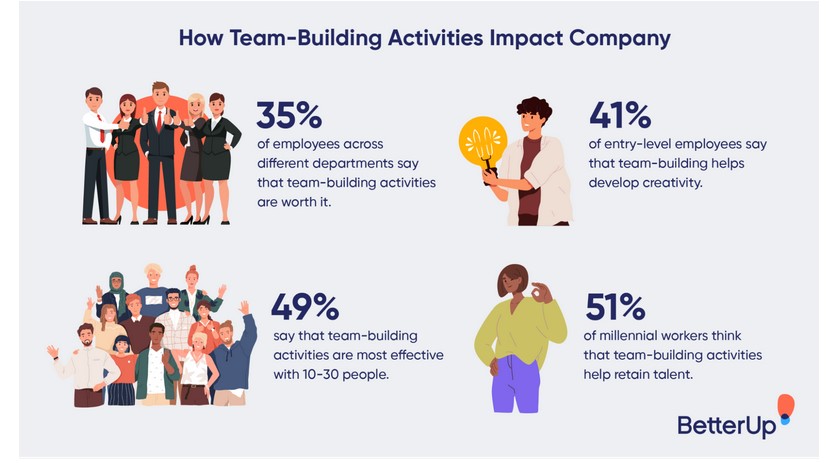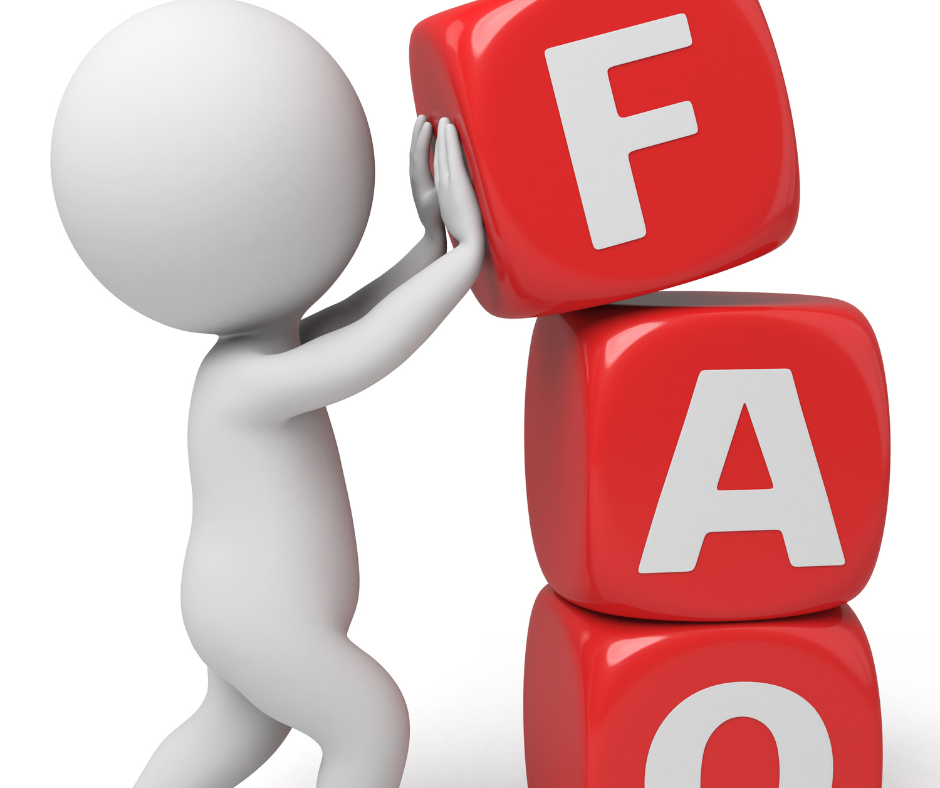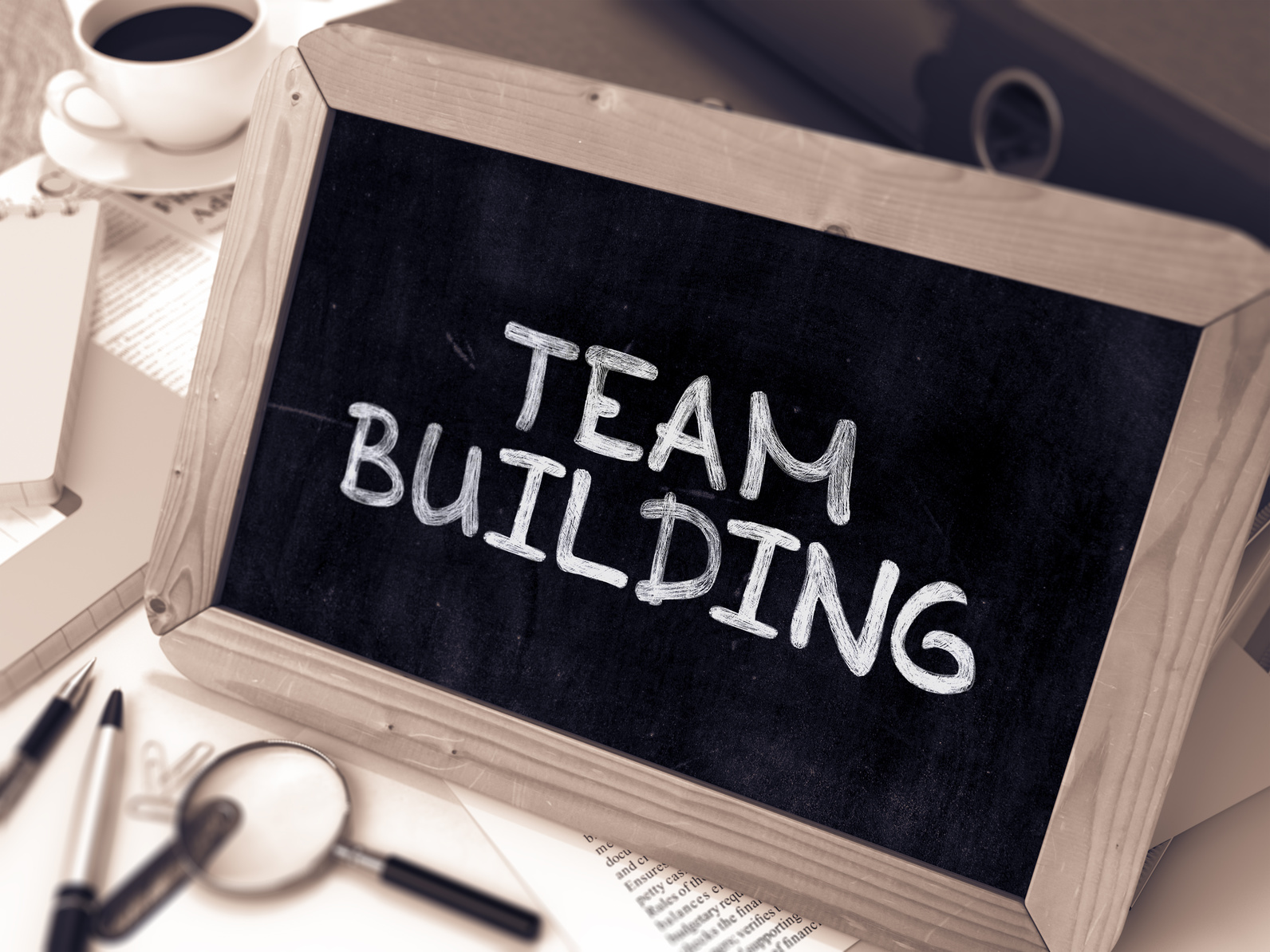Hey, did you know that companies who implement regular feedback have turnover rates that are 14.9% lower than those that do not?
This striking statistic underscores the power of effective team building feedback, which has become an indispensable tool in fostering team collaboration through feedback.
From my experience, feedback in teamwork is not just about evaluation but resonating with the heartbeat of an organization—its people.
The essence of enhancing teamwork through feedback lies within its nuanced approach to each member’s unique contributions and its profound ability to shape a team’s collective force.
In the realm of team performance evaluation, it is about crafting an environment conducive to growth, inclusivity, and shared victories.
When teams invest in fostering team collaboration through feedback, they create a symphony of skills, ideas, and expertise capable of propelling the entire company forward.
As someone who has navigated through the ebbs and flows of team dynamics, I can attest to the transformative impact of well-structured feedback.
It bridges gaps, aligns goals, and ignites a spirit of continuous improvement that becomes palpable across all levels of performance.
>>>>>Click here for fun team building games to boost morale.
Key Takeaways
- Incorporating regular feedback can significantly decrease staff turnover.
- Team building feedback acts as a catalyst for improved collaboration and trust.
- Creating a feedback-rich environment boosts performance and nurtures talent.
- Feedback in teamwork is essential in aligning individual and organizational goals.
- Enhancing teamwork through feedback leads to a culture of resilience and adaptability.
- A systematic approach to feedback empowers teams and leaders to thrive together.
Unlocking Potential with Targeted Team Building Feedback
As a professional invested in the growth of my team, I recognize the transformative power of constructive feedback.
It is a tool that, when used effectively, can uplift the collective spirit of a team, encouraging each member to strive for excellence.
In the realm of teamwork, where diverse talents and perspectives converge, directed feedback aligns energies and fosters an environment ripe for collective achievement.
1 – The Role of Feedback in Boosting Team Performance
Feedback within a team setting does more than just point out areas in need of improvement—it serves as a catalyst for motivation and trust.
Through consistent and specific feedback, I aim to bolster performance by creating a transparent atmosphere where honest communication is valued.
Positive feedback acts as reinforcement, deepening employee engagement and driving teams towards our mutual goals.
2 – Constructive Feedback Techniques for Empowering Teams
By blending encouragement with constructive feedback, I work to empower my colleagues, giving them the confidence and direction needed to thrive.
It’s not about delivering critiques; it’s about framing opportunities for growth that inspire action and dedication.
I’ve learned that when I tie feedback directly to an individual’s goals and the team’s vision, it resonates more deeply and leads to substantial morale boosts.
3 – Valuing Employee Engagement through Acknowledgment
In my quest to nurture a high-performing team, acknowledgment is as critical as any strategy task. Recognizing contributions—big or small—renders a powerful morale boost.
I make it my mission to celebrate milestones and invest in the retention of top talent through regular, genuine expressions of appreciation.
The positive atmosphere this creates is irreplaceable, fostering a willingness among the team to exceed expectations and trust in the organization’s leadership.
In summary, through deliberate positive feedback and recognition, I reinforce the notion that each member is integral to our collective trajectory.
The cultivation of motivation and retention through these methods is not just beneficial—it’s imperative for fostering a culture of excellence and trust.
Got Team Building Games? PRESS PLAY! #boostmorale
![]()
Book a live game show experience today!
Contact us for further details.
For Immediate assistance by text – 917-670-4689
No deposit required. 5-Star Google Rated
We plan and facilitate all activities. Let’s Play!
Establishing the Foundation for Effective Team Communication
In my pursuit of effective team communication, I’ve discovered that the key ingredients are trust, open dialogue, and a commitment to common goals.
It’s not just about talking more; it’s about creating channels that foster productive exchanges. For this to occur, team leadership feedback must not only guide but also inspire every member towards goal achievement.
Trust is the cornerstone. It’s the assurance each team member needs to feel secure in sharing ideas and feedback without fear of reprisal or ridicule.
I’ve seen firsthand how trust cultivates a fertile environment where collaboration thrives and productivity soars. As such, establishing trust is not an optional extra; it’s an essential precondition.
Building trust within a team does not happen overnight. It’s an ongoing process that is as much about listening as it is about talking.
Integrating structured team meetings into our routine, I’ve emphasized the importance of active listening, ensuring all team members understand that their voices are valued.
The diversity of perspectives is not just heard, but encouraged, and this has led to a marked increase in collaboration and innovative solutions.
| Aspect of Communication | Strategies for Enhancement | Impact on Team Dynamics |
|---|---|---|
| Openness | Regular, structured team meetings; Anonymous feedback channels | Encourages honest exchanges, leading to stronger team bonds |
| Trust | Team building activities; Transparent decision-making | Facilitates psychological safety and risk-taking in idea sharing |
| Active Listening | Active listening exercises; Acknowledgment of all suggestions | Promotes respect and validates member expertise, enhancing engagement |
| Productivity | Clear communication of roles and responsibilities; Goal-oriented discussions | Directs efforts efficiently towards achieving team objectives |
It’s through such deliberative strategies that we approach goal achievement not as a distant milestone but as a series of intentional, daily actions inspired by the collective strength of a united, well-communicated team purpose.
The Art of Delivering Constructive Team Feedback
Mastering the delivery of constructive team feedback is akin to a fine art that, when done expertly, can elevate performance potential and fuel the growth and development of team members.
In my capacity as an advisor, I have discerned that striking a balance between praise and critique leads to greater engagement, reinforces employee morale, and fosters a culture rich in trust and motivation.
a) Guidelines for Framing Feedback Positively
Positive framing is paramount in constructive team feedback strategies. My approach focuses on engagement and motivation by providing actionable advice.
It’s crucial to recognize the individual’s skills and highlight the positive impacts of their contributions before delving into areas ripe for growth or improvement.
This method encourages a continuous loop of development and satisfaction, enhancing both individual and team culture.
b) Balancing Praise and Critique to Optimize Employee Morale
To safeguard and boost employee morale, I’ve found that praise should be as specific as critique.
Acknowledging specific achievements builds trust and sets the groundwork for employees to openly receive constructive feedback.
Trust grows in a soil rich with sincerity, leading to lasting motivation and a shared commitment to culture and satisfaction—all of which are propelled by coaching that values authentic and constructive team feedback.
- Identify the individual’s strengths and accomplishments
- Provide specific, actionable suggestions for development
- Ensure that feedback is balanced and fair
- Emphasize the value of each team member’s role in the broader culture
- Maintain a positive and supportive tone throughout the coaching process
The canvas of team dynamics is shaped by the palette of feedback. Constructive critique, when paired with deserved praise, not only outlines the current picture but also sketches the pathway to collective achievement and satisfaction.
>>>>>Click here for fun team building games to boost morale.
Through thoughtful coaching and a robust culture of engagement, each individual’s skills can be honed, leading to not just personal fulfillment but also to a symphony of collective success that resonates throughout the entire organization.
Promoting a Feedback Culture in Teamwork
As I delve into the integral role of feedback within a team, it becomes clear that establishing an environment of continuous improvement drives not just individual success, but the collective progress of our organization.
Acknowledging each member’s contributions lays the groundwork for a culture abundant in appreciation and recognition—a core aspect of effective collaboration.
Creating Continuous Feedback Loops for Real-Time Improvements
In my experience, the implementation of continuous feedback loops is vital for nurturing a responsive and agile team.
This real-time exchange of feedback examples fosters communication that is pivotal for timely adjustments to strategies and workflows.
It’s about creating a culture where recognition is not an afterthought, but an embedded routine that elevates every aspect of our work and reinforces our commitment to excellence in teamwork.
Including Feedback Training in Leadership Development Programs
Leadership, at its essence, requires a mastery of communication—a skill that is greatly enhanced by adeptness in giving and receiving feedback.
Incorporating targeted feedback training into leadership development programs is a strategy I have seen reap numerous benefits.
It goes beyond improving individual skills to significantly bolster our collective culture, emphasizing the value of continuous learning and mutual appreciation.
| Feedback Aspect | Impact on Teamwork | Tools/Methods Used |
|---|---|---|
| Recognition and Appreciation | Boosts team morale and encourages further positive contributions | Reward systems, Acknowledgment in team meetings |
| Consistent Communication | Ensures clarity of objectives and roles, fosters trust among team members | Regular one-on-one check-ins, team huddles |
| Active Listening | Promotes understanding and inclusivity, encourages more open feedback sessions | Feedback workshops, Listening exercises |
| Constructive Feedback | Drives individual and team performance by highlighting areas for development | 360-degree feedback, Performance reviews |
Measuring and Enhancing Team Performance through Feedback
In my experience, effective leadership is pivotal for driving team performance to new heights.
By harnessing the power of constructive feedback, leaders can foster a culture of productivity and goal achievement.
Let’s explore how feedback serves as a strategic tool for enhancing team dynamics and overall success.
Stepping into the role of a team leader, I have learned that feedback is not merely about evaluation.
It is an ongoing dialogue that encourages growth and improvement.
With a focus on team performance, feedback allows me to highlight both strengths and areas in need of development, thereby directly impacting productivity and the achievement of strategic goals.
Through feedback, we communicate expectations, share visions of excellence, and chart a roadmap for future success.
To quantify the impact of feedback on team performance, I’ve adopted a detailed approach that encompasses several key metrics:
| Performance Indicator | Before Feedback | After Feedback | Improvement Noted |
|---|---|---|---|
| Efficiency | 75% | 85% | 10% |
| Team Morale | Medium | High | Significant |
| Quality of Work | Good | Excellent | Noticeable |
| Goal Achievement | On target | Above target | Exceeded |
My findings reflect the profound impact that structured feedback has on achieving measurable outcomes.
For anyone in a leadership position, it is clear that integrating feedback into regular practice is not just beneficial; it’s essential for cultivating a high-performing team.
- Recognize achievements to boost morale and reinforce positive outcomes.
- Identify challenges to devise targeted solutions.
- Engage team members in the feedback process to promote ownership and accountability.
- Use feedback to pivot strategies and enhance agility in achieving team goals.
At the end of the day, feedback must serve as a beacon, guiding the team closer to our shared aspirations.
It is the catalyst for continuous improvement and a testament to the forward-thinking leadership that propels us toward unparalleled productivity.

Game shows for Team Building
Fostering Team Collaboration through Actionable Feedback Strategies
As a professional passionate about enhancing team dynamics, I have consistently seen that actionable feedback is the catalyst for driving meaningful collaboration.
To achieve this, one must utilize strategies that not only provide clarity but also inspire positive behavior and cooperative work.
This enables a team to utilize positive reinforcement as a tool to build upon successes while systematically addressing areas that require further development.
Understanding the fundamental role feedback plays in collaboration, I’ve learned that establishing a methodical approach to feedback is crucial.
This involves designing structured frameworks that guide team members on how to give and receive insights that are both practical and forward-looking.
| Feedback Area | Actionable Strategy | Expected Outcome |
|---|---|---|
| Team Communication | Implement bi-weekly collaborative meetings for shared dialogue | Enhanced clarity and reduced misunderstandings |
| Project Execution | Utilize task management software for real-time updates and co-editing | Streamlined project tracking and improved task synchronization |
| Conflict Resolution | Adopt a solutions-focused mindset during feedback sessions | Constructive problem-solving and stronger team unity |
| Peer Recognition | Encourage recognition of small wins and valuable efforts in every meeting | Increase in team motivation and a culture of appreciation |
Critical to this strategy is ensuring that feedback is frequent, relevant, and contextual. Frameworks become meaningless without consistency and relevance.
In turn, when feedback leads to positive reinforcement, it becomes a powerful motivator for continued excellence and sustained collaboration.
In my experience, the adoption of these actionable feedback strategies has not only improved the immediate team performance but equally fostered a culture of cooperative success, which has invariably led to higher job satisfaction and team cohesion.
Cultivating Trust and Employee Engagement with Honest Feedback
In my experience, one of the most vital aspects of effective team management is the cultivation of trust through honest and transparent feedback mechanisms.
The correlation between transparency in giving and receiving feedback and the level of trust within a team cannot be overstated.
It establishes a foundation where team members feel secure and valued, thereby enhancing the overall employee engagement.
>>>>>Click here for fun team building games to boost morale.
Developing Trust through Transparency in Feedback
As a leader, I’ve learned that transparency is not just about being open; it’s about being clear and precise.
Constructive feedback, when delivered with transparency, reduces ambiguity and helps team members understand their areas of strength and opportunities for growth.
This approach invariably leads to a more trusting and collaborative team environment.
Maintaining High Engagement by Recognizing Efforts
I take pride in recognizing the efforts of my team. It’s astonishing how simple acts of recognition can significantly boost morale and sustain high levels of engagement.
Leadership plays a pivotal role here; by acknowledging the hard work and successes of employees, a culture of recognition is fostered—one which values contribution and inspires continued excellence.
Integrating Feedback into Overall Team Leadership
As I delve into the essence of team leadership feedback, it’s apparent that the incorporation of feedback into management practices is more than just a procedural step.
It’s a transformational approach that can elevate the performance and dynamics of any leadership structure.
Leadership, at its core, involves a constant exchange of feedback — not only imparting it to guide and evolve the team but also receiving it to refine leadership tactics and ensure they resonate with the team.
In practicing what I preach about management, my leadership philosophy is grounded in the belief that feedback is a loop, necessitating involvement and active participation from all levels within the team.
Recognizing the value of each member’s input is integral to fostering a democratic workplace where ideas are freely exchanged, and innovation is encouraged.
- Establishing Regular Feedback Sessions
- Training Leaders and Team Members on Effective Communication
- Creating Channels for Anonymous and Open Feedback
- Measuring Impact of Feedback on Team Performance
- Recognizing and Rewarding Constructive Participation
By embedding feedback into the fabric of daily operations, I’ve witnessed remarkable improvements in the efficacy of team management.
It constructs a bridge between expected outcomes and the collective efforts of the team, ensuring alignment with overarching organizational goals.
In conclusion, it is the fusion of receptive and proactive feedback within team leadership that forms the backbone of a high-performing, well-managed team.
This approach has continually proven to be a definitive factor in achieving a harmonized and dynamic work environment.
Effective Team Building Feedback for Driving Performance Potential
As a professional facilitator deeply invested in the success of teams, I understand that targeted team building feedback is a powerful catalyst for unlocking performance potential.
It’s a dynamic process that aligns closely with professional growth, setting the stage for unprecedented achievement.
To this end, feedback becomes more than just a periodic review—it is a continuous dialogue, aimed at enhancing skills and fostering success.
Feedback as a Tool for Career Growth and Skills Enhancement
My focus on providing structured feedback is directed towards carving out a trajectory for career goals and continuous professional advancement.
I see it as an essential coaching tool that not only points out areas of needed improvement but also celebrates strengths.
This balance is critical in skill enhancement and paves the way for ongoing professional accomplishments.
Regular Evaluations to Tap into Each Member’s Performance Potential
Regular evaluations are a cornerstone practice. It’s through these assessments that I can tap into the performance potential of each team member, tailoring feedback to catalyze their unique career paths.
The resulting data not only reflects current success but also outlines a roadmap for future achievements.
| Feedback Category | Expected Outcome | Impact on Performance Potential |
|---|---|---|
| Professional Growth | Enhanced Skills Set | Increased Capacity for Complex Projects |
| Achievement | Recognition of Success | Heightened Motivation and Engagement |
| Success | Goal Attainment | Better Alignment with Organizational Objectives |
| Career Goals | Clearer Career Trajectory | Enhanced Personal and Professional Satisfaction |
Through careful integration of feedback into my leadership strategy, I remain committed to coaching for skill enhancement and fostering an atmosphere where success and professional growth are not just ideals, but tangible realities.
Encouraging Positive Reinforcement to Shape Team Dynamics
As a proponent of team efficiency and a positive work atmosphere, I’ve consistently found that positive reinforcement plays a critical role in crafting healthy team dynamics.
Acknowledgment shouldn’t be an afterthought; it’s a powerful tool that can instigate substantial behavior change within a team, galvanizing members to collaborate more effectively and remain committed to their roles.
Often, a well-timed word of praise can reaffirm someone’s effort or idea, reinforcing a culture of excellence and mutual support.
Let’s not underestimate the compelling influence of encouragement on a team’s morale and output.
By recognizing the right behaviors and achievements, team leaders can engineer an environment that enhances both individual and collective performance which leads to a more cohesive unit.
Positive reinforcement engenders an environment where team members feel valued and inspired to not only meet but exceed expectations.
Here are some effective strategies I employ to leverage positive reinforcement:
- Timely Recognition: Offering immediate praise post-achievement plays into the human psychological need for instant gratification, increasing the likelihood of repeated positive behavior.
- Specific Acknowledgment: When I commend a team member, I focus on specific actions rather than general statements to reinforce exact behaviors that contribute to success.
- Public Appreciation: I make it a point to acknowledge individuals in front of their peers, elevating their status in the group and setting a benchmark for excellence.
- Growth Opportunities: Positive reinforcement is also about providing opportunities for growth, showing belief in a team members’ potential.
| Behavior Change Technique | Expected Outcome | Example |
|---|---|---|
| Rewards for Milestones | Increase in team productivity | Team dinner for meeting quarterly goals |
| Verbal Praise | Improvement in individual performance | Commending a team member during a meeting |
| Constructive Feedback | Positive shift in work quality | One-on-one review sessions highlighting strengths |
| Recognition Programs | Better team morale and retention | Employee of the Month awards |
The power of positive reinforcement in shaping team dynamics cannot be overstated.
When administered judiciously, it not only enhances productivity but also builds an enduring foundation of respect and camaraderie among team members.
It’s a cornerstone of my approach to fostering an enriching work environment where everyone can thrive.

team-building-impact-statistics
>>>>>Click here for fun team building games to boost morale.
Leveraging Organizational Culture for Effective Workplace Feedback
In my experience, the resonance of workplace feedback with an organization’s culture multiplies its impact tremendously.
It’s essential to ensure that the feedback I offer aligns with the core values—whether they pivot around innovation, empathy, integrity, or collaboration.
This harmony between feedback strategies and organizational culture reinforces values, setting the stage for a thriving work environment that honors diversity and inclusion.
Aligning Feedback Strategies with Core Values
For instance, when I craft feedback, it’s not just about pinpointing areas for enhancement.
It’s about reinforcing the values that foster collective ambition and individuated employee experience.
In doing so, improvements are not just adjustments to behavior or process but are steps towards professional growth within the auspices of the organizational ethos.
As feedback becomes a reflection of what we stand for, it deepens the employees’ connection to the mission and vision of the company.
Adapting Feedback Methods to Diverse Work Environments
Moreover, I’ve learned that adapting feedback methods to diverse workspaces enacts the imperative of inclusion.
Feedback should empower everyone, from the boardroom to the break room, acknowledging the spectrum of perspectives.
Emphasizing personalized feedback conducive to each employee’s unique journey within the organization fosters an environment of equity and belonging.
Such a culture of personalized yet unified feedback riches the soil for seeds of progress and nurtures an ecosystem of relentless pursuit of excellence—as individuals, and, more importantly, as a collective.
FAQ – Team Building Feedback Strategy

frequently asked questions
How can feedback foster better team performance?
Feedback plays a crucial role by providing team members with insights into their strengths and areas for improvement. It facilitates open communication and trust, which are essential for collaboration and productivity.
Timely and specific feedback encourages a team-focused attitude that aligns with company goals for superior team performance.
What are some effective techniques for delivering constructive feedback to a team?
Constructive feedback techniques involve being specific, timely, and objective. Feedback should focus on behaviors rather than personal traits and include actionable advice for improvement.
It is also important to balance positive reinforcement with constructive criticism to ensure team members are motivated and clear on how to enhance their performance.
Why is employee engagement important when giving feedback?
Feedback that acknowledges an employee’s hard work and achievements contributes significantly to their engagement.
Engaged employees are more motivated, exhibit higher levels of performance, and are more likely to remain with the organization.
Positive feedback serves as reinforcement and encouragement, boosting morale and nurturing a culture of trust and motivation.
What are the guidelines for framing feedback positively?
When framing feedback positively, it’s important to begin with recognition of what is working well.
You should directly address areas for improvement in a constructive manner, and provide clear examples and guidance to help the employee understand how to progress.
Framing feedback in this way fosters a supportive environment that encourages continuous personal and professional growth.
How can continuous feedback loops help in a team setting?
Continuous feedback loops encourage ongoing communication and review of processes and strategies, allowing teams to make real-time improvements and adaptations.
This facilitates a dynamic environment where learning and development are constant, and team members can quickly adjust their methods for better results.
In what ways can feedback contribute to leadership development programs?
Integrating feedback into leadership development programs helps leaders refine their communication and management skills, equipping them to provide effective feedback.
It also prepares leaders to create a culture of recognition, appreciation, and performance improvement within their teams.
How can feedback be used to measure and enhance team collaboration and productivity?
Feedback offers critical insights into how team members work together and their individual contributions to the team’s goals.
It can identify best practices for productivity and highlight collaboration challenges, allowing leaders to make informed decisions on the resources and strategies needed to enhance team performance and achieve objectives.
What is the significance of transparency in providing feedback?
Transparency in feedback is key to developing trust within a team.
Being honest and clear about performance, expectations, and the reasons behind feedback helps employees understand the bigger picture and their role within it, fostering a culture of open communication and shared responsibility.
How does recognizing team member efforts improve employee engagement?
Recognizing team member efforts confirms their value to the organization and reinforces their contributions, leading to higher levels of job satisfaction and loyalty.
When employees feel appreciated, they are more engaged, productive, and willing to go the extra mile for the team and the organization.
Why is feedback important for an employee’s performance potential and professional growth?
Feedback is essential for making employees aware of their strengths and potential while guiding them on their career paths.
It fosters a growth mindset by providing the development opportunities needed to reach their full potential, ultimately benefiting the individual’s career goals and the organization’s success.
How does positive reinforcement impact team dynamics?
Positive reinforcement shapes team dynamics by promoting behaviors and actions that contribute to a positive work environment.
Recognizing and praising these behaviors encourages their repetition, fostering a culture of encouragement and support that is conducive to the team’s effectiveness and cohesion.
How can organizational culture influence the way workplace feedback is given?
Organizational culture sets the tone for how feedback is delivered and received.
A culture that values openness, diversity, and inclusivity will frame feedback in ways that respect these values, contributing to an environment where employees are comfortable sharing and receiving constructive criticism.









